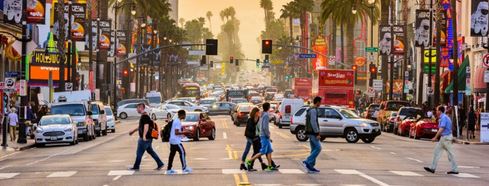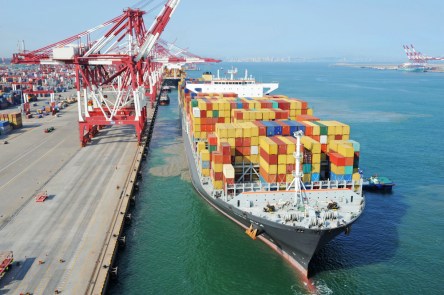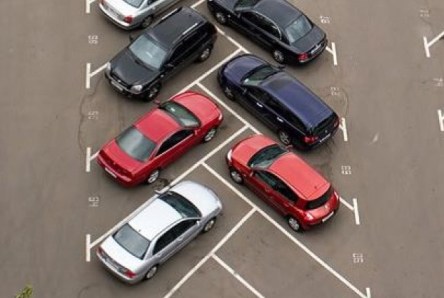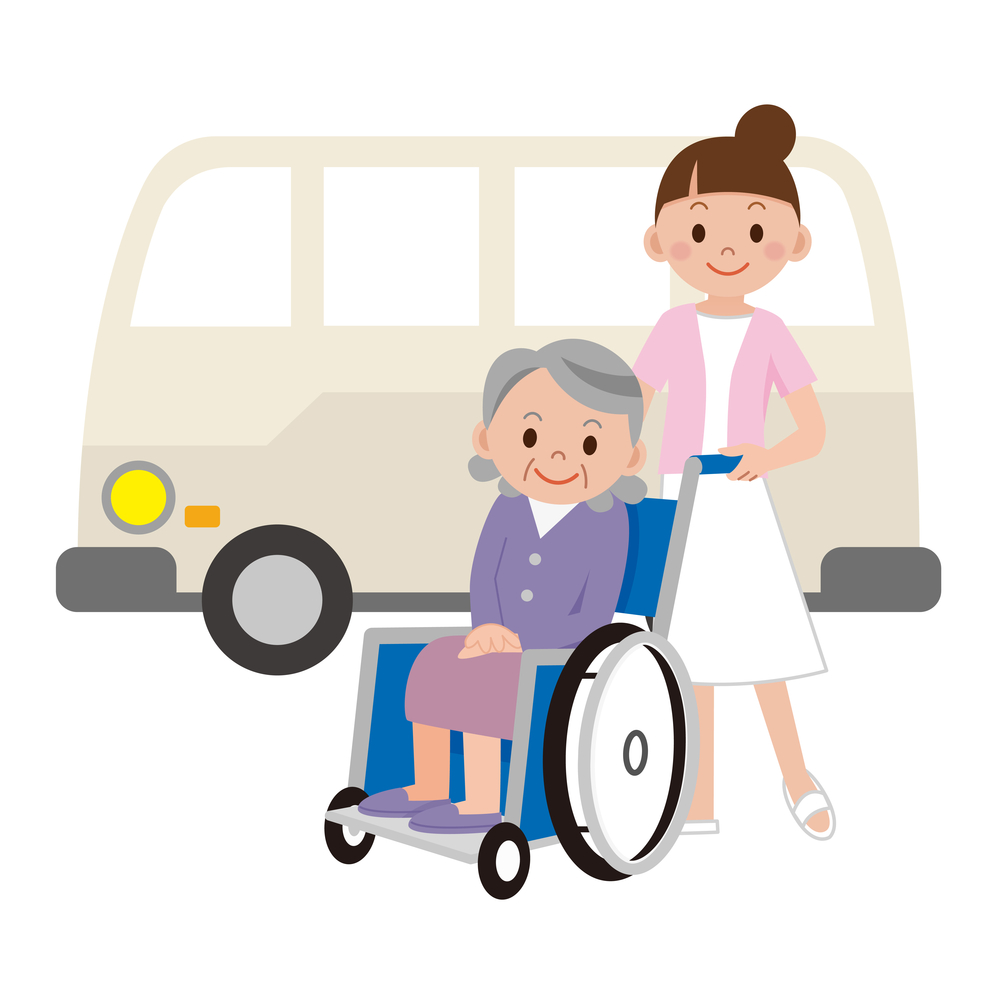We’ve been watching how solar power is slowly making its way in a variety of industries. The automotive industry has been working extensively with solar in recent years, with Tesla assuming a leading role. Most people, when talking about using solar energy to power cars, refer to sourcing electricity from solar panels. But a Dutch company has a different idea. Lightyear One is the creation of five Eindhoven alumni who have already built two solar cars, Stella and Stella Lux, for the Bridgestone World Solar Challenge Cruiser Class. (Both projects are prototypes of four-seater solar cars.) The startup Lightyear announced their plans to combine onboard solar cells with an efficient battery pack and an optimized design to deliver a road-legal, four-seat electric car that can charge itself directly from sunlight. A car that can go the distance “You can think of the Lightyear One as being as an electric car redesigned from the ground up to combine the best of solar cars and electric cars,” said Lex Hoefsloot, CEO of Lightyear, in a prepared statement. “It’s a revolutionary step forward in electric mobility because we are able to combine a great look with extreme efficiency. This first model makes science fiction become reality: cars powered using just the sun.” The Lightyear One concept was unveiled in early July, touting a battery that can constantly replenish its power using the sun. In addition, the car can travel a range of up to 500 miles when fully charged. But most interestingly, the company claims that in the right sunny environment, such as Hawaii, the luxury sedan could potentially drive for months at a time between charges. This revolutionary feature solves for the notion that electric cars could be restricted to regions with reliable charging networks. The...
Tunnel Time?
Musk's suggestion for LA
Late last year, entrepreneur Elon Musk sent out a series of tweets complaining about the heavy traffic in LA. Can’t argue with him there – Southern California has the country’s worst traffic, according to a study released by the data company Inrix. Musk called being stuck in traffic “soul-destroying.” But he didn’t just whine, he proposed a solution: tunnels. At first, it wasn’t clear if this was a billionaire’s joke or if he’s really serious about The Boring Company (suggested tagline: it’s not boring!). But then Musk added “Tunnels” to his Twitter bio, alongside Tesla, SpaceX and OpenAI, and the announced on January 28 that digging has begun. A team of workers excavated a “test trench” 30 feet wide, 50 feet long and 15 feet deep on the grounds of SpaceX’s Los Angeles headquarters, at Crenshaw Boulevard and 120th Street. So far, Musk calls it the start of an experiment. The “pilot tunnel” will only traverse Crenshaw Boulevard to SpaceX’s employee parking structure, but he made it public that his tunnel ambitions are much bigger. “We’re just going to figure out what it takes to improve tunneling speed by, I think, somewhere between 500 and 1,000 percent,” he said during a recent Hyperloop design competition at SpaceX. “We have no idea what we’re doing—I want to be clear about that. We’re going to get this machine, take it apart, figure out how to make it go much faster while still being safe and not affecting people on the surface. We’ll see how much progress we can make, but I’m optimistic tunneling can be improved by at least five-fold, maybe 10-fold.” That’s key to a lot of technologies—road tunnels, train tunnels, Hyperloop tunnels. For those who aren’t familiar, Hyperloop is a space-agey proposed mode of transportation...
No Parking
Urban Transportation and Housing
Though parking lots are a necessary evil for many cities, surrendering space to automobiles places an undue burden on housing and urban development. On boulevards and avenues across the country, cars circle in an endless cycle, seeking the perfect parking spot and clogging city streets with noise, pollution and traffic. All the while, the space set aside for automobiles wreaks havoc on urban housing. In many cities, developers must provide adequate off-street parking options for any new construction, which ultimately undermines affordable housing initiatives. But what if there was a better way? Last month, the White House released its Housing Development Toolkit. A summary of suggested policy adjustments, the toolkit includes a number of suggestions aimed at helping cities increase affordable housing inventory. The toolkit’s recommendations cover tax adjustments, changes to local zoning laws, and the reduction or elimination of off-street parking requirements. “Parking requirements generally impose an undue burden on housing development, particularly for transit-oriented or affordable housing,” states the report. “By reducing parking and designing more connected, walkable developments, cities can reduce pollution, traffic congestion and improve economic development.” Killing the Commute In the 50s and 60s, the mass exodus to the suburbs was seen as a sign of progress. As incomes rose, families ditched apartment living for open spaces, big backyards, and longer commutes. Over the years, the distance between work and home has grown. These days, many Americans spend several hours a day locked in their vehicles traveling to and from the office. While once economic success once spurred urban flight, high rents and few options are behind today’s workforce relocation. With inflation rising and salaries stagnant, many workers find themselves priced out of their neighborhoods. Ironically, it’s often regulations on parking and transportation that end up adversely affecting affordable housing stock. As the toolkit explains, “These requirements have a disproportionate impact on housing for low-income households because these families tend to own fewer vehicles but are nonetheless burdened by the extra costs of parking’s inclusion in the development.” Low Rents and Bigger Inventories As the toolkit points out, many cities, including Denver, New York, and Minneapolis have already experienced positive results after reducing or eliminating minimum parking regulations. In Seattle, decreasing minimal parking requirements in the city center resulted in “a wave of new development, including hundreds of units with now associated parking spaces.” Even more, eye-opening, a study on Seattle’s decision corroborated the connection between minimum parking requirements and housing costs. In fact, not only did the requirements reduce the number of total units available, they often triggered 50% higher rents. No More Wasted Space With vacancies at a premium, it makes little sense to set aside large swaths of vacant property for the storage of cars often used just a few hours a day. In addition, vehicles in motion are equally nefarious. A study by UCLA urban planner Donald Shoup estimated vehicles cruising around a 15-block stretch of Los Angeles released 730 tons of carbon dioxide annually while also gulping down 47,000 gallons of gas. Apply those numbers nationally, and you can see why it makes good environmental and economic sense to not only move cars off the road but also eliminate the total number of private automobiles in urban environments. There will always be the stubborn holdouts who will cling to their steering wheels with steely determination. For most city dwellers, though, a functioning – and functional – public transportation infrastructure can make car ownership obsolete. Fewer cars ultimately mean fewer parking spots, freeing up all that square footage for housing, including affordable developments. In other words, for proponents of affordable housing, reducing or eliminating parking requirements is a win-win. “Minimum parking requirements [are] the most noted barrier to housing development,” states the Toolkit. “By reducing parking and designing more connected, walkable developments, cities can reduce pollution, traffic congestion and improve economic...
Sci Fi Olympics
Tokyo Plans for 2020
All eyes may be on Rio this summer, but the buzz has already shifted to Tokyo in 2020, in part because the city is promising to present “the Olympics of the Future.” This summer, the world will tune in to South America’s first Olympics, and expectations are low. Tales of insufficient preparation paired with images of pollution and fears regarding the ongoing Zika outbreak have cast a pall over the event. Meanwhile, halfway around the world, Tokyo plans to wow the globe in just four-year’s time with its future-focused games. A Next-Gen Personal Assistant Any avid fan of science fiction, or casual watcher of the Jetsons, knows the future will include robots and advanced Artificial Intelligence (AI). In Tokyo, Olympic visitors will get a firsthand look at the latest in robotics technology when they wander into the Odaiba neighborhood. Right next door to the Olympic Village, Odaiba’s streets will abound with specially programmed robots deployed to help international visitors with any number of tasks, from translation to directions and more. For foreign spectators who find themselves “robot-less,” all is not lost! Communicating with locals will be a breeze, thanks to real-time language conversion apps like VoiceTra. VoiceTra can interpret up to 27 languages and provide text conversions. For less tech-savvy travelers, Panasonic plans to debut a wearable device that can instantly translate Japanese into ten other languages. All those smart devices will need a hearty network, and Japan has that covered as well. An estimated half a million visitors are expected in Tokyo for the games, and the cell towers will surely be working overtime. In anticipation of the deluge, Japan’s largest cell phone company, DoCoMo is working with Nokia to deploy 5G wireless networks able to run on high frequencies. Current 5G demos have hit the 2 gigabit per second speed mark, more than enough to handle all those texts, selfies and status updates. Traveling in (Modern) Style For Japan, the Olympics also present the opportunity to build on past accomplishments. When Tokyo hosted the 1964 games, the country debuted its shinkansen bullet trains. Fifty or so years later, the country is putting locomotives back in the spotlight with its own maglev train, which could end up being the fastest on the planet at 374 mph. And then there are the self-driving taxis! In Tokyo, robot-taxi tests are already underway. As part of a collaborative effort between Japanese software maker DeNA and robotics firm ZSMP, a small fleet of retrofitted minivans stands ready to be hailed via smartphone. By the time the games arrive, these autonomous taxis will speedily transport athletes and spectators to and from events. Not only will the taxis be driverless in Tokyo by 2020, they may be gas-less as well. The government plans to add 6000 fuel cell cars by 2020 (with an ultimate goal of 100,000 by 2025), with $385 million set aside to subsidize purchases of Toyota’s fuel-cell car, the Mirai. In addition, another 100 fuel-cell powered buses will join to the city’s fleet. Energy Alternatives In addition to highlighting new technologies, the Japanese government is taking advantage of the games to debut new power sources, including algae-based fuel and large-scale hydrogen power. As part of an effort to introduce the use of algae-based fuel for airplanes and buses, the government has teamed with over 40 organizations, including Boeing, Japan Airlines and Nippon airlines. Algae-based fuel cuts CO2 emissions by 70%, and there’s even some indication that Boeing may use the project as a jumping off point for widespread use down the line. Anyone headed to the Olympic Village will surely travel over a large underground pipeline funneling hydrogen power directly to the village itself. In fact, Japan has earmarked $330 to promote hydrogen energy use in the next four years. The country hopes to power the entire Olympic Village with hydrogen fuel. Special Effects Not all of Tokyo’s tech advancements are altruistic....
Ports of Tomorrow
Renovations & Automation
More than 95 percent of trade worldwide is moved via water. Though the share of maritime trade has not decreased in recent years, its sluggish growth has shipping lines competing for network efficiency. Current growth lingers between 2-3 percent, compared with 10-12 percent before 2008. Kim Fejfer, CEO of APM Terminals, explains, “The need for change has been more pronounced in the past two years than in the past 20 years,” he says. “Changes in shipping require not only investment and increased efficiency at the individual port level, but the configuration of port complexes needs to adapt to cope with current trade flows, increased ship sizes and demands for lowest possible costs. There will be clear winners and losers in the coming years.” To emerge as victors, best practices suggest packing more products onto fewer, larger ships. This method decreases transportation and personnel costs on one end. On the other, ports must now undergo costly renovations and technological upgrades to accommodate the larger vessels and greater loads: Updates to Ports In the Port of Oakland, Ben E. Nutter Terminal recently reconfigured entrance gates, added more than 100 units of equipment to expedite cargo handling, and upgrading the terminal operating system. Upon reopening this spring, the terminal receives empty containers and export cargo with the inbound call of the 1,100 TEU vessel, Ever Liberal. At Port of Baltimore, Ports America Chesapeake and CSX Intermodal signed an agreement that gives the former company operational responsibility for the intermodal container service. This agreement will promote smoother operations for direct on-dock access to rail service. It will also improve the port’s appeal as one of only three East Coast ports capable of accommodating super-post-Panamax ships. The Port of Houston Authority receives 67 percent of all containerized cargo in...
Bing: Better Maps?
Using live traffic cameras
Bing is far from being one of the popular kids on the internet playground. But here’s some good news: Bing has updated Bing Maps with the option to view 35,000 live traffic cameras in 11 unnamed countries including the US and Spain. Pretty cool, no? This looks like a helpful tool in checking major roads for congestion before hitting the road. Moreover, the feature ties into the Clearflow traffic prediction algorithm which was launched in mid-November. The move points to Bing Maps planning on becoming a strong competitor to Google Maps; Microsoft’s traffic service is well aware of the fact that it needs to offer what the competition doesn’t have if it wants to lure Google loyalists. However, Microsoft doesn’t want to force-feed the new service, thus those who are not interested in the camera feeds can toggle the feature off—this will hide the camera icons on the maps. To access the traffic camera feature, users need to first download the Bing Maps app and then with a simple tap of the Traffic button (at the top of the app) they can study the traffic levels. Viewing multiple cameras at the same time is also possible, causing the screen to divide into smaller windows. The user has the ability to configure a specific route, too. This way, the app will help peruse through the cameras that are on the path. Bing Maps separates traffic levels in four color-coded categories: green for no traffic, yellow for light traffic, orange for moderate traffic, and red for heavy traffic. Having access to this piece of information from the traffic cameras will make each and every driver plan a better, quicker route to their destination. Furthermore, users can compare traffic cameras in the area by going to the...
Parking ROI
Creative Parking Solutions
For most of us, parking is little more than a necessary evil. If we could, we’d use the parking space for more units and enjoy the additional cash flow. But what if your parking lot could become an asset? From practical to extravagant, these creative parking solutions can transform a requirement into a revenue-generating tool. Creative Parking In metropolitan areas, the ability to offer multiple parking spaces per household may give you an advantage over the competition. Get the most out of your available space by ditching the traditional parking scheme for one that is growing in popularity in the UK. The layout above permits narrower rows thus potentially more rows for your site. Automated Parking Urban luxury properties may consider electronic self-parking. The featured automated parking tower above is for a Volkswagen plant but add in a “valet” for the electronic system and you’ve tapped into a marketing feature. (Robotic Carpark in Dubai shows a non-commercial application.) It only takes 15 seconds to park or retrieve a vehicle. While the space savings is significant and the amount of parking you can offer tenants is appealing, the bragging rights may be a tower’s greatest appeal. Commuter Options Shuttle may be an excellent asset for suburban rental communities. When you can’t offer residents direct access to public transit, a shuttle to and from the nearest station can be even better. Residents gain access to affordable transportation into the city without concern for weather conditions, paid parking at the station, or parking security. Before implementing a plan, a quick survey from the community may help you determine the cost structure and travel times that will be most successful. Added Amenities Adding amenities to parking areas is another way to generate revenue. Traditionally, this has...
Uber and Seniors
Transit and tech
You’ve probably heard – or personally experienced – the convenience and controversy of Uber. Taking on the traditional taxi transportation model, this global ride-sharing company has made a huge splash in changing the way ridesharing works. But Uber isn’t just about using an easy app to find a ride home from a party or the airport. The company is now branching out and setting its sights on the senior demographic cohort, hoping that it can make their lives a little easier – and maybe even help them stay independent longer. Two less well-known Uber services, uberASSIST and uberWAV, are designed specifically with seniors and the disabled in mind. Drivers for these services will operate vehicles that are accessible (such as a van with a ramp able to load a wheelchair), and often will have to take extra time to assist their passengers with boarding and departing the vehicle. uberASSIST, the senior service, hit the news in a big way last week because it was talked about at the White House Conference on Aging, an annual event that focuses on elder issues. Not long ago, Uber and competitor Lyft were hit with criticism, even lawsuits, for not complying with state and federal disability access regulations. Now, it appears that the company is taking steps to address those concerns. Pilot programs of uberASSIST include Ventura, Calif.; two Florida cities (Gainesville and Miami Lakes), Columbus, Ohio; Austin, Texas; and Phoenix and Tucson, Ariz. The intent is to partner with cities and community senior centers to get seniors access to the technology required to request a ride – and even teach them how to use an app or mobile communication device. As the Baby Boomers age into retirement and their senior stage of their lives, services like this...
Cost of Living Calculator...
HUD + DOT Make Relocation Easier
Relocating can be tough for tenants, particularly when they are moving to a new city or state. To ease the transition, The Department of Transportation and U.S. Department of Housing and Urban Development have created the Location Affordability Portal (LAP), a website equipped with tools that give a realistic idea of the costs associated with relocating to a different area. The portal also includes a variety of features that are useful to real estate and development professionals. The joint venture of HUD and the DOT came as a result of interesting findings: the average family spends nearly 50 percent on its income on housing and transportation. While housing costs are traditionally easy to calculate, transportation costs are not. By compiling user-entered information along with each department’s collected data, an easy-to-use portal has taken shape. Users now have access to a vast amount of national data. Users can simply type in the address of a residence and receive the calculation for housing and transportation costs. Families can determine whether it’s better to live and work in the city, live in the suburbs and commute to the city, or any other variation of housing and transportation options. Such a resource would have been incredibly helpful for Jeff Ratchford of Conyers, GA. He knew that he didn’t want to live in the city. He opted to live in a suburban community and commute to his workplace. By using public transportation, he received the best combination of what he wanted: a spacious home for his family at a great price, an acre lot, good schools, a peaceful neighborhood and an inexpensive commute. “We found the home and lot that we wanted and we were right where we wanted to be,” he recalls. For the first few years, Ratchford...








